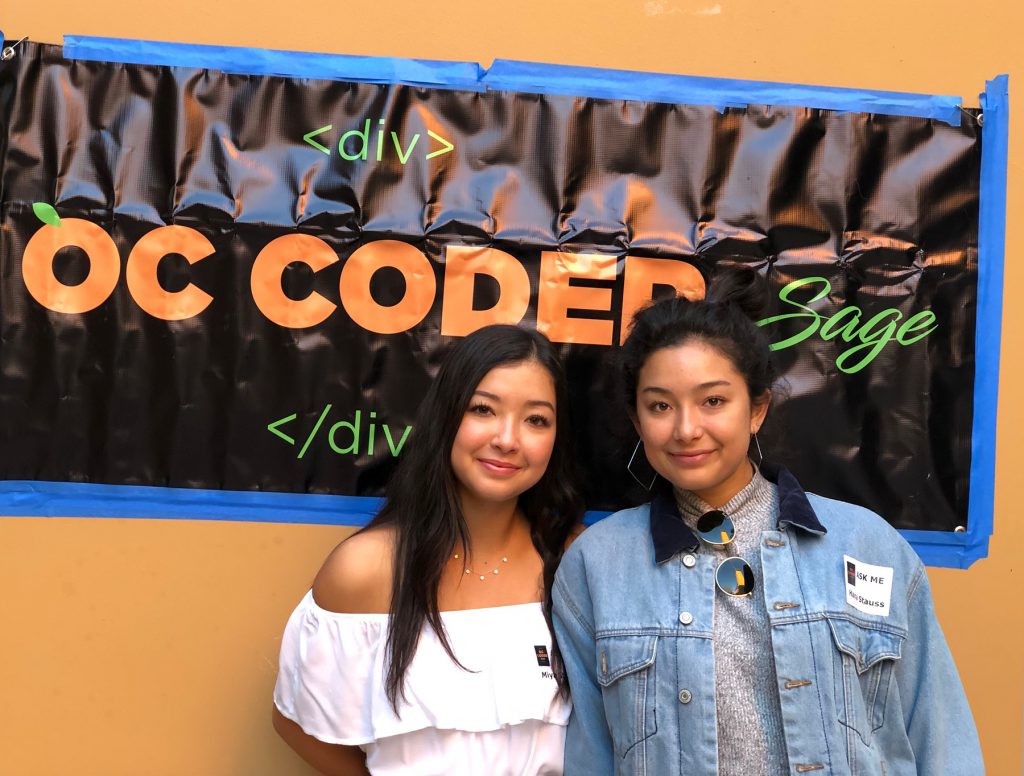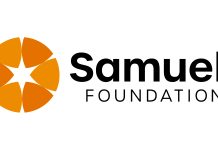
For those afraid of what the future holds for this country, they need only talk to 16-year-old fraternal twins Hana and Miya Stauss, currently juniors at Sage Hill School, to see that the future’s not only bright, it’s brilliantly incandescent.
Although grades and class standings are never publicized at Sage Hill, “the girls are academically driven and high performers,” apprised Torrey Olins, the school’s director of communications and marketing. Their excellence transcends the classroom, for the girls involve themselves in a variety of extracurricular activities, perhaps most uniquely in the computer coding seminars that they established for interested students countywide.
For the uninitiated, computer programming (of which coding is part) is described in Wikipedia as “the process of designing and building an executable computer program for accomplishing a specific computing task.”
“Programming involves tasks such as analysis, generating algorithms, profiling algorithms’ accuracy and resource consumption, and the implementation of algorithms in a chosen programming language (commonly referred to as coding)” states Wikipedia. “The source code of a program is written in one or more programming languages.”
Hana and Miya are proficient in four computer languages.
By comparison to these 16-year-old, highly motivated twins, this writer (also a twin) at the same age was using a different form of logic language … to convince the principal to let him back in school.
Of all her favorite subjects, “I find math the most challenging, it challenges me in a lot of ways,” Hana said, adding that it is complementary to her AP (advanced placement) computer class. She says she has been interested in academics since “an early reading experience excited my curiosity.”
Miya, the shorter of the two, says she doesn’t have a favorite course, liking “History and English as much as Math and Science,” although AP Economics ranks high the interest category. “It’s eye-opening for me, to be able to explore how the real world works.”
Since they first started school, this junior year is the only time that they’ve been in the same class together, “Spanish 3.” Passably conversant in Espanol, they also speak Japanese, thanks to their Japanese mother, in addition to month-long immersion language courses in Japan every summer, to which their supportive parents send them.
“Coding can be intimidating and can come off boring,” Miya admitted. “In the 7th and 8th grades, I didn’t understand it, but it opened up in my freshman year when I went to a Stanford (University) course and saw the creative side of coding,” she added. “It’s not just symbols, it’s how everything works.”
As Hana progressed in her understanding, she became a teaching assistant (TA) for a two-week, summer educational offering called “Kode with Klossy,” in both San Francisco, and Los Angeles. It was an all-girl emphasis.
“It makes a huge difference” in learning, Hana said. “An all-girl environment is more productive. Girls are more open to share ideas without boys,” she opined. “Girls express themselves more freely, and so it snowballs into a more creative environment.”
Likewise, last April, at Sage, Hana taught coding as part of GEMFest, whose official mission is to provide middle school girls with “information and inspiration to take on middle school, high school and the world.” Every seat in Hana’s classroom was taken.
Recognizing their skills, Sage Hill encouraged them to teach coding at the school’s summer camp. The sisters worked together, enlightening up to 13 kids in a class.
And most recently, the school hosted “Hour of Code” – hosted by the school club that the girls started, called “OC Coder” – at which 110 3rd to 8th graders from 40 different schools registered to “get a taste of coding.”
Miya and Hana, as well as some of their classmates, taught four different classes. “It was really cool,” Miya said. “We were able to provide a taste for what coding really is. We showed them where it’s headed in the future; it was amazing to provide the opportunity for these kids.”
Although coding, symbols and math can be intimidating to some, Hana dismissed the “fear factor.” You don’t need an aptitude for it, she said reassuringly.
“Code is the universal language, we can all understand it the same way; it’s not language based,” she clarified.
Miya, who admits to being less technologically focused than her sister, said that one can “get a taste of coding in an hour. I didn’t like it in the beginning, but if you’re exposed to the right teachers, you can be interested.”
Hana added “The power of coding is where you understand it; you can apply it in any field.”
The OC Coder Club recruits students from the Computer Sciences Department at UCI to tutor and to lead free coding classes four times a year. “We want to instill the love of computer science to our students,” Hana summed up.
Life is not all academics for the Stauss sisters.
“We love traveling, it’s a passion for our family, a way to bond,” Hana said. “Our parents instilled a passion for culture.”
Last summer, they all flew to Cambodia, where “we saw kids our age who were uneducated,” Hana recounted. In an important, perhaps microcosmic, but meaningful way, the Stausses donated part of their vacation time as a family to “help paint a village school.”
To date, the girls have visited 15 countries.
Though only juniors, both girls currently are looking at top universities in the East. Neither is “projecting” past a Bachelor’s Degree.
“We see a lot of value diving right into the work force,” they both agreed, where so many exciting professional opportunities are yet to be discovered.
As unique as Miya and Hana are, Sage Hill School is blessed with gifted and motivated students, all of whom are encouraged to excellence by a staff that lives to educate.
“For us, it’s all about the students and education,” Torrey Olins emphasized. The school’s generous donors agree.
To learn about Sage Hill School and its unique programs, visit Sagehillschool.org.




